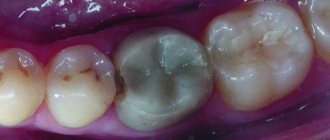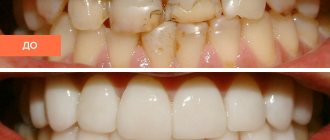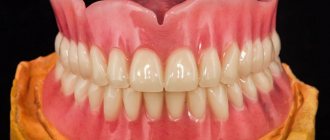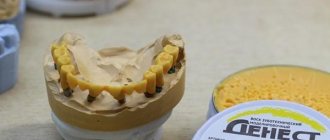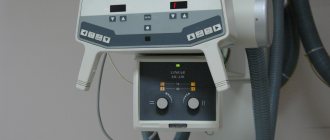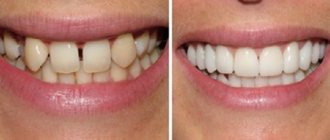Have you decided to install veneers or crowns, but have doubts about the ideality of the final result? Then use the wax modeling service and visually evaluate the beauty of your future smile, even before the manufacture and installation of a permanent denture.
Using innovative Wax-up and Mock-up technologies, dental laboratory specialists will create an accurate mock-up of a permanent structure and demonstrate its convenience to the patient. If necessary, technical adjustments will be made to correct the shape and size of individual teeth. And only after this, in accordance with the planned plan, the final version of the implants will be manufactured.
What is Wax-up technology?
Wax-up is a modern technology for modeling your smile. With its help, even before installing veneers or crowns, you can see the changes in teeth that will occur after their installation. The innovation makes it possible to eliminate possible deficiencies and imperfections and change the shape of teeth even before they are installed.
Despite many advantages, this technology also has its disadvantages:
- The prosthetic design allows you to evaluate the position and shape of the new tooth. At the same time, it is impossible to determine whether the shade of the new enamel is exactly right;
- The Wax-up model does not allow you to determine the range of possible chewing movements.
Indications
The main indications for wax modeling are:
- performing indirect prosthetics;
- restoration of aesthetics;
- production of structures such as lumineers, veneers, bridges or conventional crowns;
- excessive abrasion of enamel;
- anatomical features of the jaw that require detailed modeling;
- destruction of the supra-root area, especially with advanced caries;
- the enamel has acquired a yellowed or brown color that cannot be removed using standard methods;
- restoration of a lost tooth with a preserved root;
- other defects that require correction with a crown or bridge.
The procedure has a number of contraindications, including:
- allergic reactions to the materials used when taking impressions;
- acute oral diseases;
- rehabilitation after radiation therapy;
- malignant formations;
- drug addiction, alcohol abuse, smoking;
- bone diseases;
- inflammatory processes of the mucous membrane in the acute stage;
- other diseases that may become an obstacle to prosthetics.
Making a wax model takes about 20 minutes, that is, the manufacture of the device is carried out immediately in the presence of the Patient. This allows you to immediately show the expected future result.
When are Wax-up and Mock-up needed?
Doctors may recommend performing one of the presented technologies if the patient has bite distortions, as a result of which increased tooth wear. Also, the procedure may be required to restore one or more teeth. In cases where the patient has problems with the joints. The procedure is appropriate for:
- Restoring a completely destroyed tooth;
- Restoration of a whole range of teeth;
- For aesthetic restoration of teeth in the smile area.
Benefits of dental modeling
Dental prosthetics using modeling has many advantages:
- • provides the patient with a visual model of the final result;
- • eliminates any defects at the initial stages;
- • relieves discomfort in the future;
- • reduces the duration of addiction;
- • does not damage nearby teeth;
- • eliminates misunderstandings that may arise between the patient and the doctor regarding the shape and other features of the teeth;
- • allows you to take into account all the client’s wishes;
- • provides the opportunity to adjust the model.
Models will help improve the effectiveness of dental restoration only if done well. Our clinic employs highly qualified dentists and uses modern equipment, which guarantees high quality service. We will help you fully restore the functionality and aesthetics of your teeth.
What is Mock-up
This technology gives the patient the opportunity to appreciate the beauty of the restored smile and chewing teeth even before the prosthetic structure is made.
Advantages:
- Such structures made using Mock-up technology make it possible not only to immediately evaluate the visual effect of future prosthetics, but also to use temporary structures until permanent ones are made.
- While wearing temporary Mock-up structures, the patient can make adjustments until the permanent form is made.
- Using this technology, the doctor can make a prosthesis with an ideal fit.
Wax modeling technique
The implementation of the technique includes 3 stages:
- Assessment of the condition of the oral cavity. At this stage, additional diagnostics can be carried out, for example, an orthopantogram, and treatment of various diseases (periodontitis, dental caries, etc.). Modeling is possible only after complete sanitation of the oral cavity.
- Making dental impressions. To do this, the patient needs to bite down on a dental tray made of silicone material.
- Based on the copies received, the dental technician creates copies of the patient’s jaws in the laboratory, after which the final result of the planned treatment is simulated.
Mock-up stages
- The doctor makes a wax model of future teeth, taking into account the patient’s wishes.
- After making the wax, plaster impressions are created.
- No enamel grinding is needed for this technology.
- The plastic is placed into a silicone model and placed on the patient’s natural teeth.
- After removing the silicone, a temporary plastic structure remains in the oral cavity.
In cases where a patient comes to the doctor with complex oral problems, the installation of structures can be carried out in several stages. The patient needs some time to get used to the new forms, to evaluate how comfortable they sit, and whether they cause inconvenience when chewing food or talking. After which, the doctor evaluates the quality of the impression made, including based on the patient’s complaints. Decides whether future restoration can solve existing imperfections.
Teeth modeling methods
- indirect (wax-up) - diagnostic wax modeling; - direct (mock-up) - trying on a prototype of teeth (translated from English as “life-size model”).
Indirect modeling steps
First, the dentist takes impressions of the upper and lower jaws.
In this case, silicone is used, since it is very important that the material is of high quality. Then the doctor records the habitual closure of the jaws, preparing the bite ridges, and performs registration using a face bow. The next stage is work in the articulator. This is the name of a special device that allows you to simulate the movement of the lower jaw and debug all chewing movements of the dental apparatus. If the bite decreases, then with the help of special studies, taking into account facial characteristics, they calculate how many millimeters it needs to be raised.
A silicone model of teeth is placed on a plaster base in an articulator and analyzed. At the same time, the dental technician takes into account the functional and aesthetic wishes of the patient and the dentist. He then makes a wax model and shows it to the patient. If necessary, correction is made.
If the patient is satisfied with everything, then a permanent prosthesis is made in the laboratory based on the Wax-up model.
How does forward modeling work?
Mock-up modeling is performed directly in the oral cavity.
It allows you to determine the optimal shape of the prosthesis. Direct modeling can be figuratively compared to trying on a dress. The doctor makes silicone impressions of the teeth. Great importance should be paid to modeling the palatal surface, without which it will not be possible to make a full-fledged cast.
Composite plastic is placed into the silicone impression (it is better to use a material that is different in color from the teeth) and placed on the patient’s teeth. The impression is then removed and excess materials are removed from it. If necessary, increase the size of the teeth and reduce the width of the spaces between them.
Next, the dentist, using special brushes and prophylactic paste, cleans the teeth of plaque. At the same time, no manipulations are performed with the teeth: they are not prepared or sawed, as with conventional prosthetics, which allows maintaining the integrity of the dental apparatus.
The base shade of enamel and layer-by-layer dentine are applied to the template. Next, the doctor restores the structure of the tooth, forming anatomical details on the surface of the model, including mamelons (the so-called protrusions and tubercles on the teeth). Restoration of the dental structure is carried out sequentially, starting from the oral surface and gradually moving to the vestibular surface. Finally, an enamel shade application is made.
Mechanical finishing is carried out after the surface of the model has dried. If the model is even a little wet, it will be difficult to visually control the quality of grinding. Polish the surface carefully using special silicone heads of different shapes. In this case, their rotation frequency should be low.
The teeth are treated with a special fixing glue and the prepared model is attached to them.
The patient can walk around with temporary teeth, which will allow him to observe his sensations and determine what exactly needs to be corrected. The doctor will also have the opportunity to study the reaction of the mandibular joint.
The technician can produce several models so that the client can make the best choice.
If the patient no longer has any complaints, then the resulting model is sent to the laboratory, where permanent dentures are made based on it.
It is especially recommended to use Mock-up models for patients who need to improve their bite, as well as for those whose teeth are severely worn out. The models are also irreplaceable when performing prosthetics on implants.
Preparing for wax modeling
Before you begin the process of modeling your future smile, you need to follow a number of recommendations:
- diagnose the mouth;
- if necessary, do a computed tomography scan and x-ray of the jaw;
- for diseases of the oral cavity, undergo a course of treatment;
- observe the rules of hygiene and sanitize the oral cavity.
Also read: Aesthetic dental restoration: how the procedure works, its types and price
Only after a complete examination and treatment course can the orthodontist and technician begin to create a Hollywood smile.
There are two options for obtaining dental impressions
The future of the “new” teeth depends on the accuracy of the impression.
Until recently, impression compounds were used to obtain impressions.
Taking impressions can be uncomfortable and cause a gag reflex in patients, and requires great skill from the doctor, otherwise the impression will be inaccurate.
It happens that casts have to be redone several times.
There is another option: you can get a digital impression of your teeth using an intraoral scanner.
Taking a digital impression is comfortable for the patient , and in terms of accuracy, the scanner is not inferior to impressions taken using impression compounds.
Have you noticed that in the video shown, after taking a digital impression, “some kind of magic” begins... and then the doctor installs a ready-made crown for the patient.
Digital scanning of teeth opens up new opportunities for modeling and manufacturing of orthopedic structures.
Let's compare how further work on creating a smile is built if dental impressions are taken using the “classical” method and using an intraoral scanner.
An opportunity to look into the future!
If the patient likes the smile he “tried on,” we can begin making permanent aesthetic restorations.
But if you need time to think and consult, then the decision about prosthetics can be postponed, since “trying on” a smile does not require dental treatment.
Now you know how to look into the future , and even before the start of prosthetics, know exactly what your “new” smile will look like.
Come to Nord Dental for the smile of your dreams!
Computer design of a “new” smile
A modern dentist is not only a photographer, but also a designer.
To make a smile beautiful and harmonious, the doctor must take into account many nuances, which we describe in detail in the article There are more and more beautiful smiles.
Watch how, using the Digital Smile Design program, the doctor analyzes the proportions of the face, adjusts the size and shape of the teeth so that the “new” smile looks beautiful and harmonious.
Computer modeling allows the doctor, together with the patient, to evaluate several smile options and choose the most suitable one.
The next stage: making models of teeth, and then trying on a “new” smile.
Price
Installing an implant system using wax modeling techniques is quite an expensive service. It includes not only the cost of the materials used and special equipment and tools, but also the increased professionalism of the specialist. Thus, in the best dental laboratories in Moscow, the cost of services for modeling one denture starts from 1,500 rubles in Moscow, and outside of it from 600 rubles.
The price may vary depending on the complexity and number of dentition units modeled. The final cost for wax reproduction is calculated by a specialist after diagnosis.
